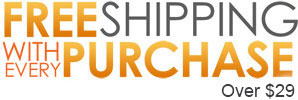Directional signs mean signs containing information about public places owned or operated by governments or their agencies, publicly or privately owned historical, scientific, educational, or religious sites. And areas of natural scenic beauty or naturally suited for outdoor recreation that the department considers being in the interest of the traveling public. There are four types of directional signs: directional, informational, regulatory and identification. Each one has a different purpose and characteristics.
They inform each other as part of the more exceptional wayfinding system.
- Identification
Identification is the most common type of wayfinding signage. They tell a person when they have arrived at their destination. They also serve as general wayfinding landmarks. Common examples include landmark signage (like donor’s plaques), Door plaques (like a “General Manager” plaque) and Departmental markers (Like a “Finances” plaque)
General examples
- Door plaques (Assistant to the Regional Manager)
- Departmental markers (Accounting and Finance; Sales)
- Landmark signage (donor plaque; historical marker)
- Directional
Directional signage helps people get to where they’re going. They’re best used at junctions and areas without clear traffic flow.
Anyone unfamiliar with their surroundings benefits from diverse directional signage. It can be as simple as a plaque at each junction, sending people left or right. Or, it may be as comprehensive as colored lines on the floor, leading people directly to their destination. General examples include Junction signage and Directory signage –like those found in a Hospital.
3.Informational
Whereas identification signage marks a particular area, informational signage pertains to the overall facilities. These signs give people broad information they need while navigating.
Informational signs should be universally understandable at a glance—signs and symbols anyone can understand. The most common examples include Restroom signage, Elevator signs, and Hours of Operation information.
4.Regulatory
Regulatory signage is a proactive form of wayfinding. It’s focused on safety and liability concerns and sets boundaries—what is and isn’t acceptable in your facilities. It’s used to establish and reinforce rules, safety standards, and privacy expectations. Examples include a “Only employees” sign, and “Potential hazard” plaques.
The best ways to use Directional signs are to:
- Make them visible and accessible for reading. The signage needs to be clear; the place where you set it also is primordial. You don’t want to frustrate your visitors with hard-to-see lettering.
- Use appropriate design elements. Do not overcomplicate things, go with standard templates, and add a personalization dash to enhance your organization or brand. Yes, you want to be creative, but most of all, you want to guide people in the right direction!
- Know your sign needs. You want to be clear and concise, and you also do not want to overwhelm your visitors with tons of signs. Know your regulations, know your audience, and plan accordingly.
Help people get a more enjoyable experience in your facilities. Directional signs are mandatory, useful, and –provided you add a little customization –creative!

